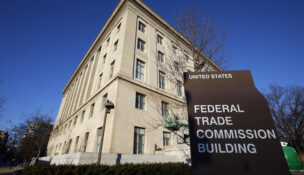Explanation of hearsay to jury goes awry
By: dmc-admin//August 25, 2008//
There are undoubtedly cases in which a juror, or jurors, questions the fairness of the proceedings.
Simply telling the jury to leave that to the judge and stick to its fact-finding role may not improve their perception.
However, trying to explain the rules of evidence to the jury carries far worse risks, as an Aug. 15 opinion by the Seventh Circuit amply demonstrates.
Daniel W. Curry was charged with four counts of armed robbery, among other offenses, in Indiana federal court.
Curry testified at trial, denying any involvement in the robberies, and suggesting that his brother, Arthur, had perpetrated the crimes.
During the testimony, the government objected on hearsay grounds whenever Curry began testifying about conversations he had with Arthur. The district court sustained those objections, and prohibited Curry from testifying about conversations he had with his brother.
During rebuttal testimony, a police officer testified that Curry had told a different story at the time of his initial interview, and pointed out numerous statements in Curry’s testimony that were inconsistent with the initial interview.
Hearsay Examples
The court later received a question from one of the jurors, asking, “Why do some witnesses get to tell the Court what someone else said, like tellers can say what another teller said, but some witnesses can’t say what another person says, like the defendant couldn’t say what his brother said?”
The judge gave a lengthy (four pages of trial transcript) answer to the jurors about the hearsay rules.
Afterwards, Curry’s attorney requested a sidebar, and moved for a mistrial, based on the court’s answer.
The judge had stated, in part, “the best example of [inadmissible hearsay] is if you have got two kids and one of them, you don’t know which one, took the peanut butter out of your kitchen and you have got the two kids standing there and the one kid said, ‘Well, he took it.’ Can you rely on that as a trustworthy statement? No.”
The judge’s discussion also referred to hearsay testimony of government witnesses as “trustworthy” in explaining why it was admitted.
Defense counsel observed that the judge’s example of untrustworthy testimony was similar to Curry’s defense — that his brother robbed the bank, rather than him.
The judge acknowledged the similarity, but denied the mistrial motion; instead, the court gave another instruction to the jury, emphasizing that it is the jury’s role to decide who is trustworthy, and they should not infer anything about that from the court’s explanation of hearsay.
The jury found Curry guilty, and he appealed.
Problems with Response
In an opinion by Judge Kenneth F. Ripple, the Seventh Circuit acknowledged the case posed a “close question,” but affirmed.
The appellate court found that the example used by the district court judge — involving the two kids and the peanut butter — was not even illustrative of hearsay.
The court was also troubled by the similarity of the judge’s example and Curry’s defense.
However, the court concluded that the incorrect and potentially biased explanation of hearsay did not require a mistrial.
The court noted that the district judge showed no hint of bias throughout the trial apart from that statement, and called the hearsay example “inadvertent, isolated and ambiguous.”
In addition, the district judge gave a detailed cautionary instruction to the jury to avoid any potential for misinterpretation by the jury. Accordingly, the court affirmed.
So what should a trial judge do when the jury asks a question suggesting it considers the trial proceedings unfair?
Outside Observation
Milwaukee County Circuit Court Judge Jeffrey A. Wagner has presided over many criminal trials, and has frequently had jurors ask questions similar to the juror’s question in this case.
However, those questions came when meeting with the jury after the trial, not during it.
If confronted with such a question, however, Wagner states he would refer the jury to the preliminary instructions, which state that it is the court’s responsibility to apply the rules, and the jury’s responsibility to determine facts.
Judge Wagner said, “What you don’t want to do is improperly express an opinion regarding the credibility or trustworthiness of evidence. If you receive a question like that, or a question like, ‘why didn’t so-and-so testify,’ it is important for the court not to imply any type of bias. What you do is answer the question submitted in a way that directs the jury back to the original
Case analysis
The appellate court’s opinion is noteworthy as much for what it doesn’t contain as for what it does.
The court is critical of the contents of the trial judge’s answer, calling it confusing and even incorrect.
However, it fails to go the next step, and recognize that any answer a trial judge can give on these lines is inevitably going to be confusing.
The standard jury instructions in both federal and state court indicate that it is the jury’s duty to find the facts.
The rules of evidence require an entire course in law school to learn (and years of practice to master); the section devoted to the hearsay rules is the largest section of any evidence textbook.
To attempt to give an impromptu tutorial to a jury in the middle of a trial on the hearsay rules, or any rule of law, is unavoidably courting a mistrial.
The court’s opinion is problematic in another manner, as well — the level of deference afforded the trial court’s decision not to grant a mistrial.
The court correctly notes that appellate review of a motion for a mistrial is abuse of discretion — a very high burden to meet.
However, this ignores a key aspect of this case. The trial judge realized his explanation of the hearsay rules could be interpreted as conveying a bias against the defendant.
At no point, however, did the district judge acknowledge that his explanation of the hearsay rules was not merely suggestive, but legally incorrect.
Thus, while the trial judge gave a curative instruction regarding the appearance of judicial bias, the full extent of the errors that needed to be cured was not yet fully apparent.
In light of this consideration, the Seventh Circuit should have afforded something less than full abuse of discretion deference to the trial court’s denial of the mistrial.
Legal News
- Chicago man sentenced to prison after being caught with ‘Trump Gun’
- FTC bans non-competes
- Gov. Evers seeks applicants for Dane County Circuit Court
- Milwaukee man charged in dismemberment death pleads not guilty
- Democratic-led states lead ban on the book ban
- UW Madison Professor: America’s child care crisis is holding back moms without college degrees
- History made in Trump New York trial opening statements
- Prosecutor won’t bring charges against Wisconsin lawmaker over fundraising scheme
- Republican Wisconsin Senate candidate says he doesn’t oppose elderly people voting
- Vice President Harris to reveal final rules mandating minimum standards for nursing home staffing
- Election workers fear threats to their safety as November nears
- Former law enforcement praise state’s response brief in Steven Avery case
WLJ People
- Power 30 Personal Injury Attorneys – Russell Nicolet
- Power 30 Personal Injury Attorneys – Benjamin Nicolet
- Power 30 Personal Injury Attorneys – Dustin T. Woehl
- Power 30 Personal Injury Attorneys – Katherine Metzger
- Power 30 Personal Injury Attorneys – Joseph Ryan
- Power 30 Personal Injury Attorneys – James M. Ryan
- Power 30 Personal Injury Attorneys – Dana Wachs
- Power 30 Personal Injury Attorneys – Mark L. Thomsen
- Power 30 Personal Injury Attorneys – Matthew Lein
- Power 30 Personal Injury Attorneys – Jeffrey A. Pitman
- Power 30 Personal Injury Attorneys – William Pemberton
- Power 30 Personal Injury Attorneys – Howard S. Sicula











